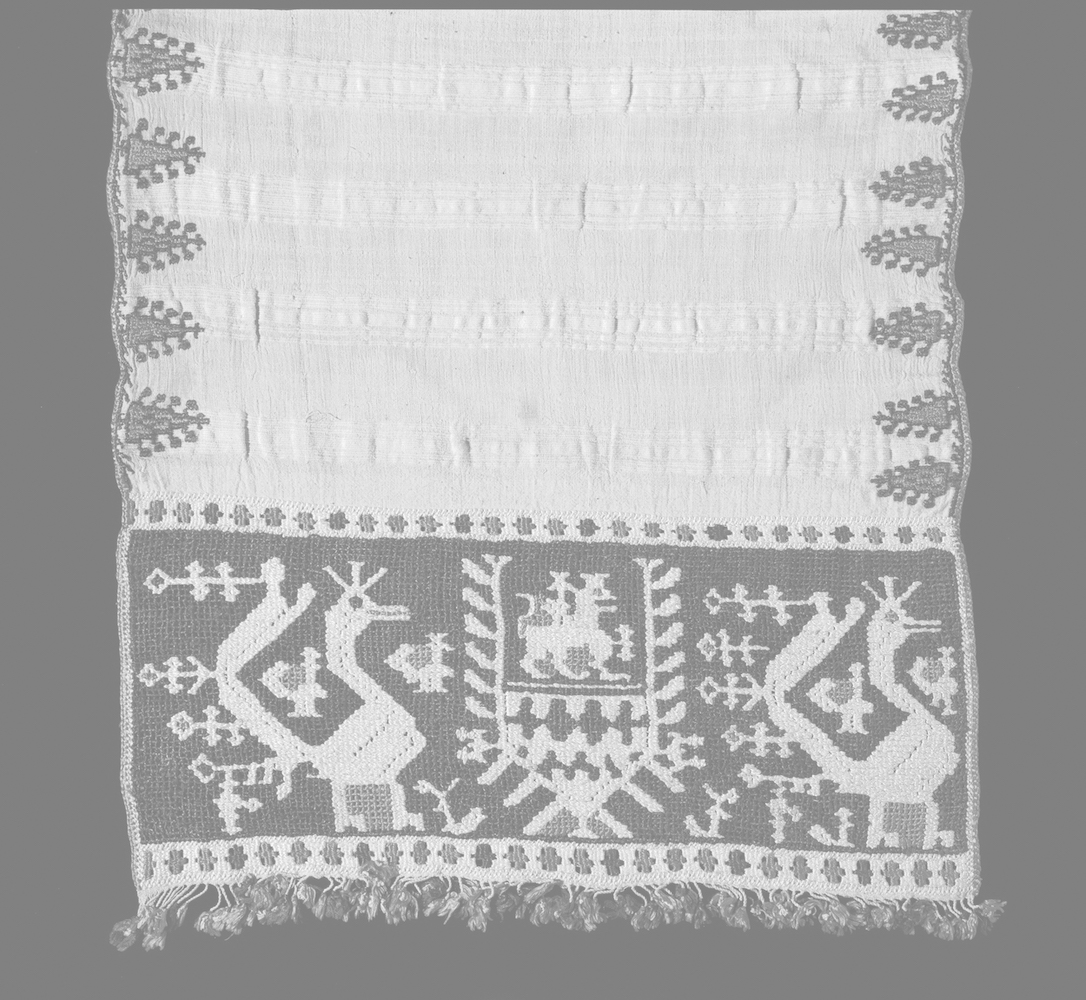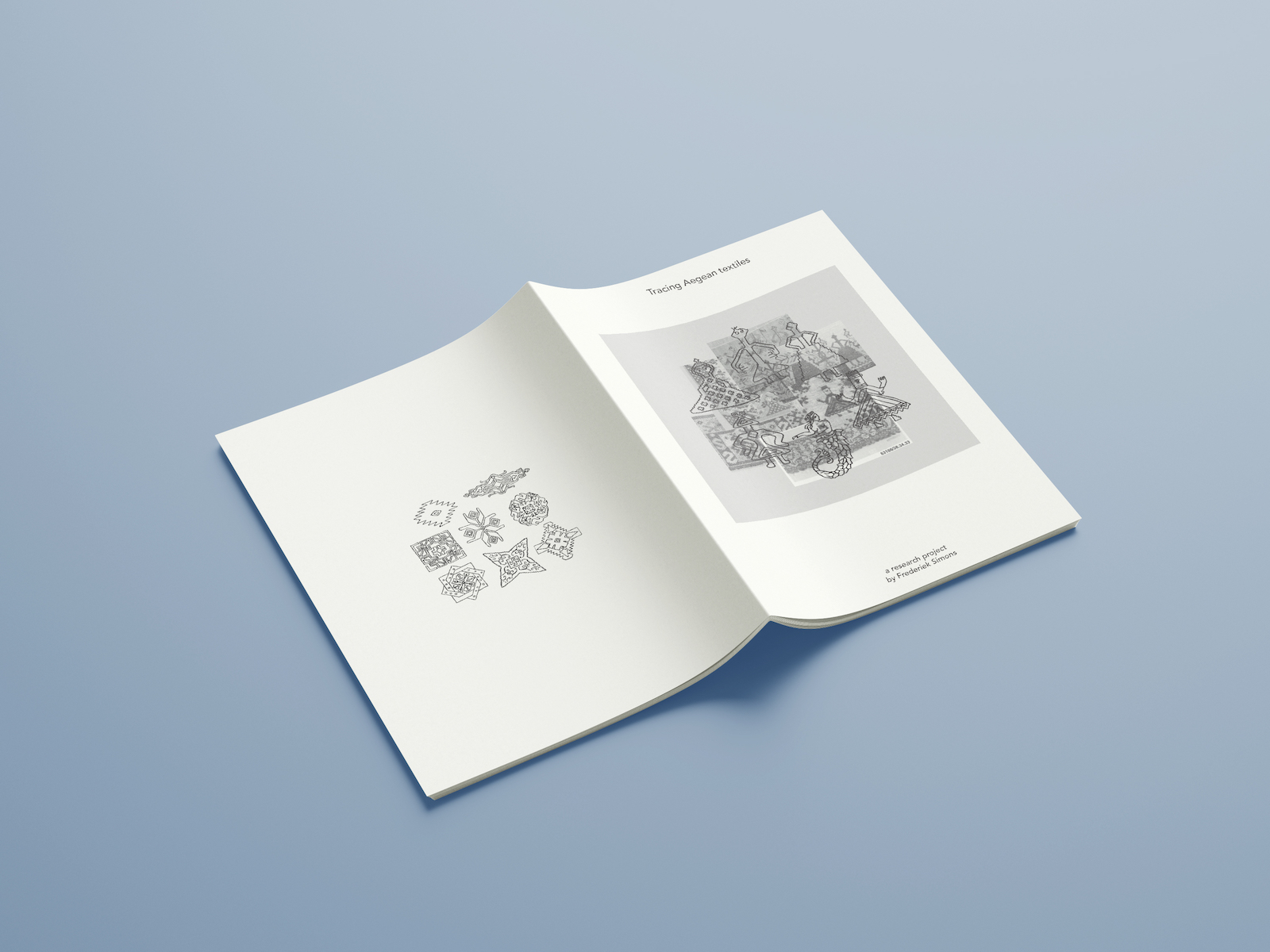

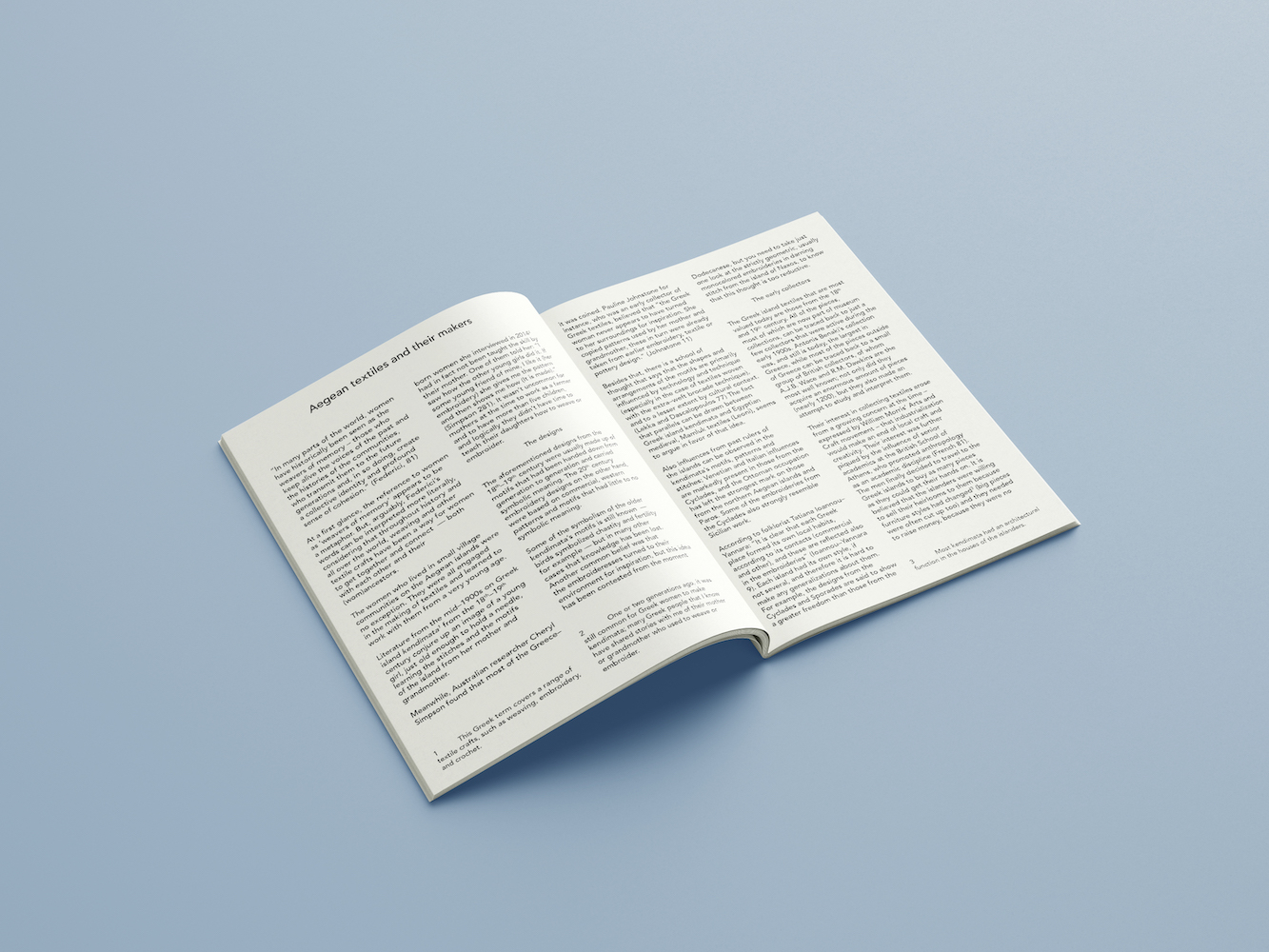
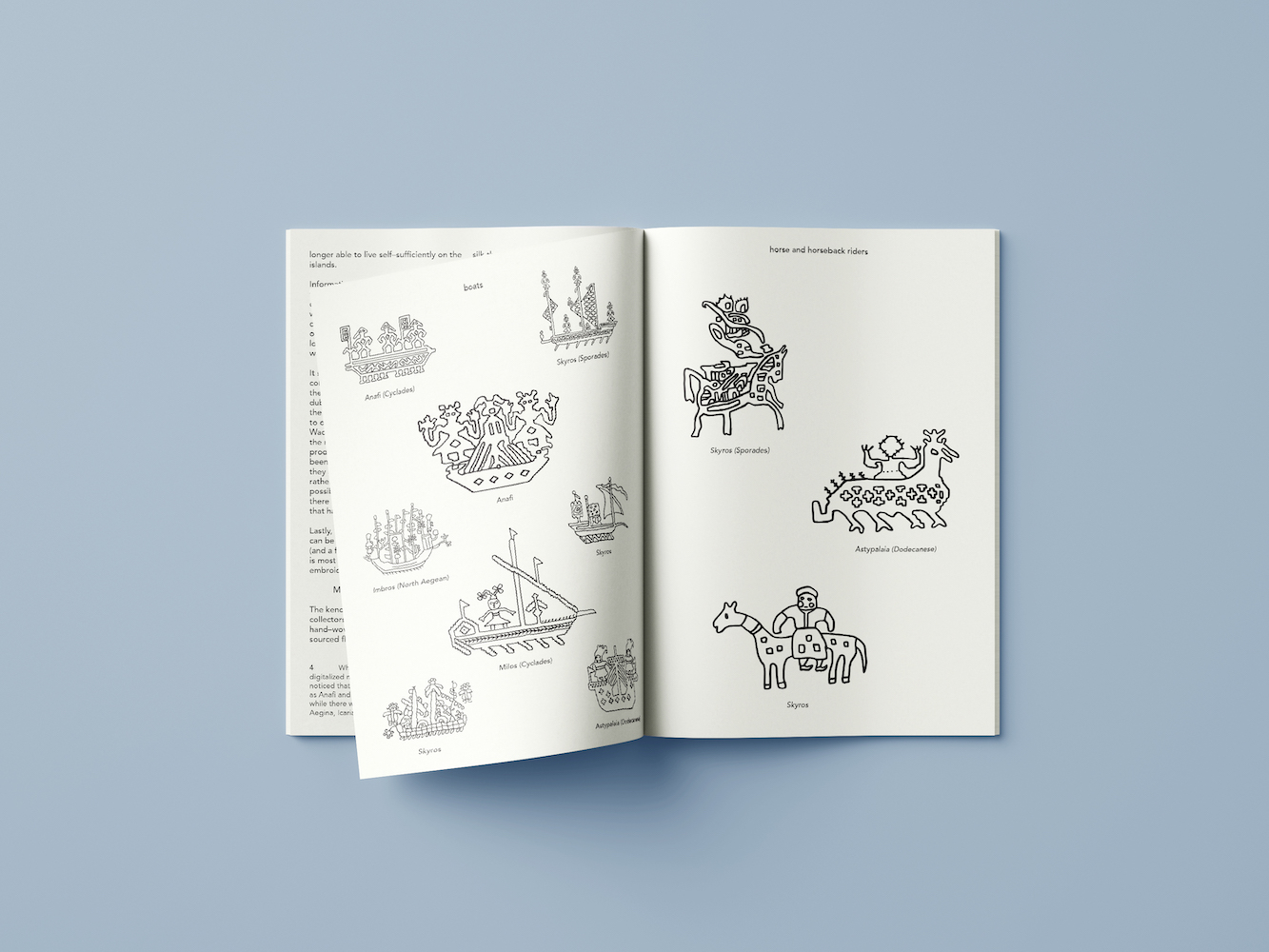
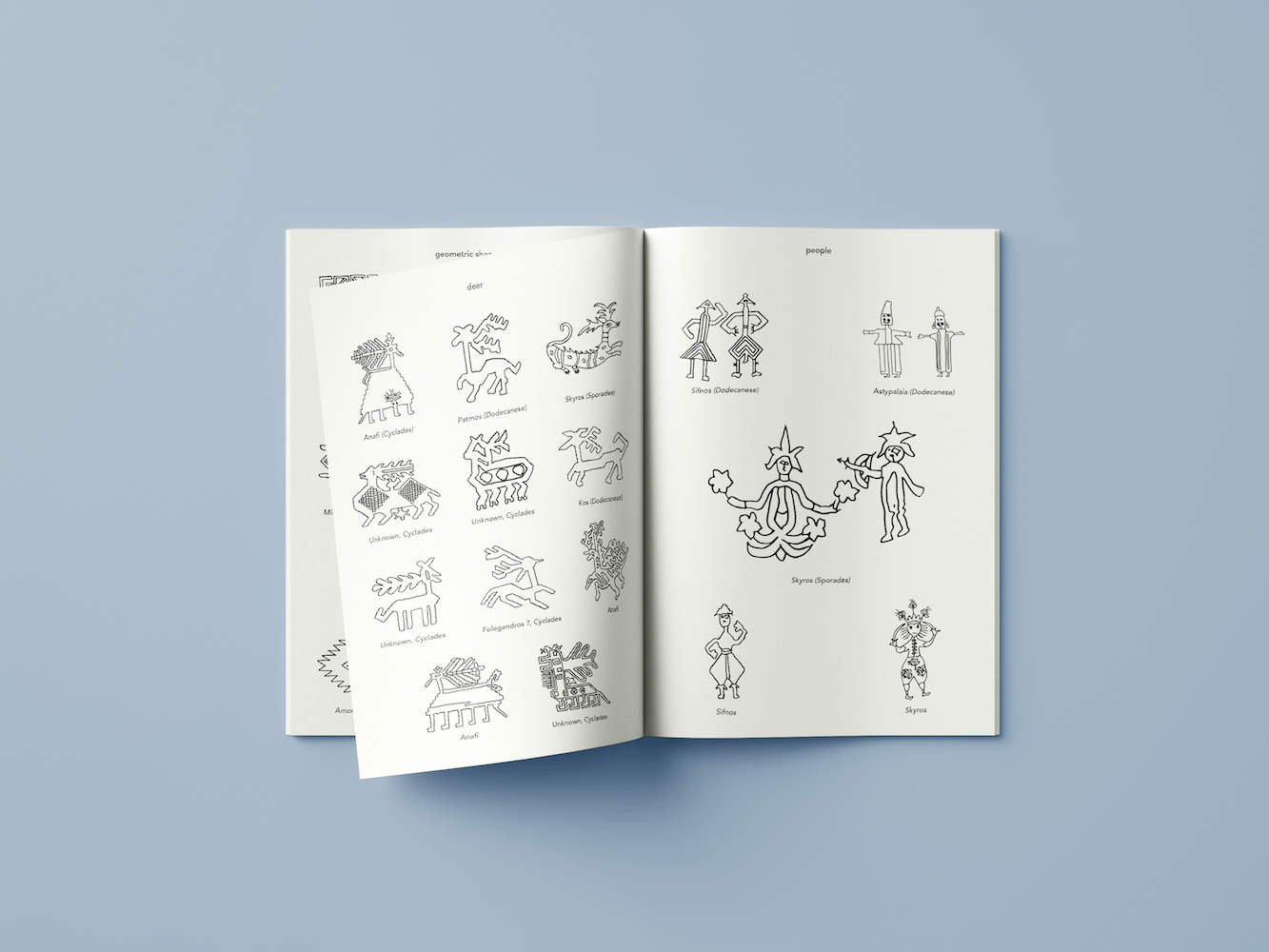
How does one trace the history of art forms that have been dismissed as folklore and women’s work? Can tracing become a form of care?
This research project about Aegean embroideries from the 18th and 19th century started with a simple question. Could I find some information for an upcoming exhibition? Triggered by the textiles’ special motifs, colors, and compositions, as well as the fragmentary information available about them, I got curious. Why do the motifs differ so much from island to island? What do they signify? What role did these textiles play in the lives of Greek women? How did they end up in the collections of British and American museums? And why are there so many fragments?
I gathered as much literature on the subject as I could find and created an archive with images from online databases. To get a feeling for the different motifs, I took a black marker and started tracing their outlines. These methods provided me with some, but not all conclusive answers. Which made me wonder: can research —an attempt to trace lost information— “simply” be a form of care?
︎ Self-published in small edition. ︎ The exhibition mentioned is Weaving Histories: Margaret Kenna and Anafi, State of Concept, 2021.
This research project about Aegean embroideries from the 18th and 19th century started with a simple question. Could I find some information for an upcoming exhibition? Triggered by the textiles’ special motifs, colors, and compositions, as well as the fragmentary information available about them, I got curious. Why do the motifs differ so much from island to island? What do they signify? What role did these textiles play in the lives of Greek women? How did they end up in the collections of British and American museums? And why are there so many fragments?
I gathered as much literature on the subject as I could find and created an archive with images from online databases. To get a feeling for the different motifs, I took a black marker and started tracing their outlines. These methods provided me with some, but not all conclusive answers. Which made me wonder: can research —an attempt to trace lost information— “simply” be a form of care?
︎ Self-published in small edition. ︎ The exhibition mentioned is Weaving Histories: Margaret Kenna and Anafi, State of Concept, 2021.
